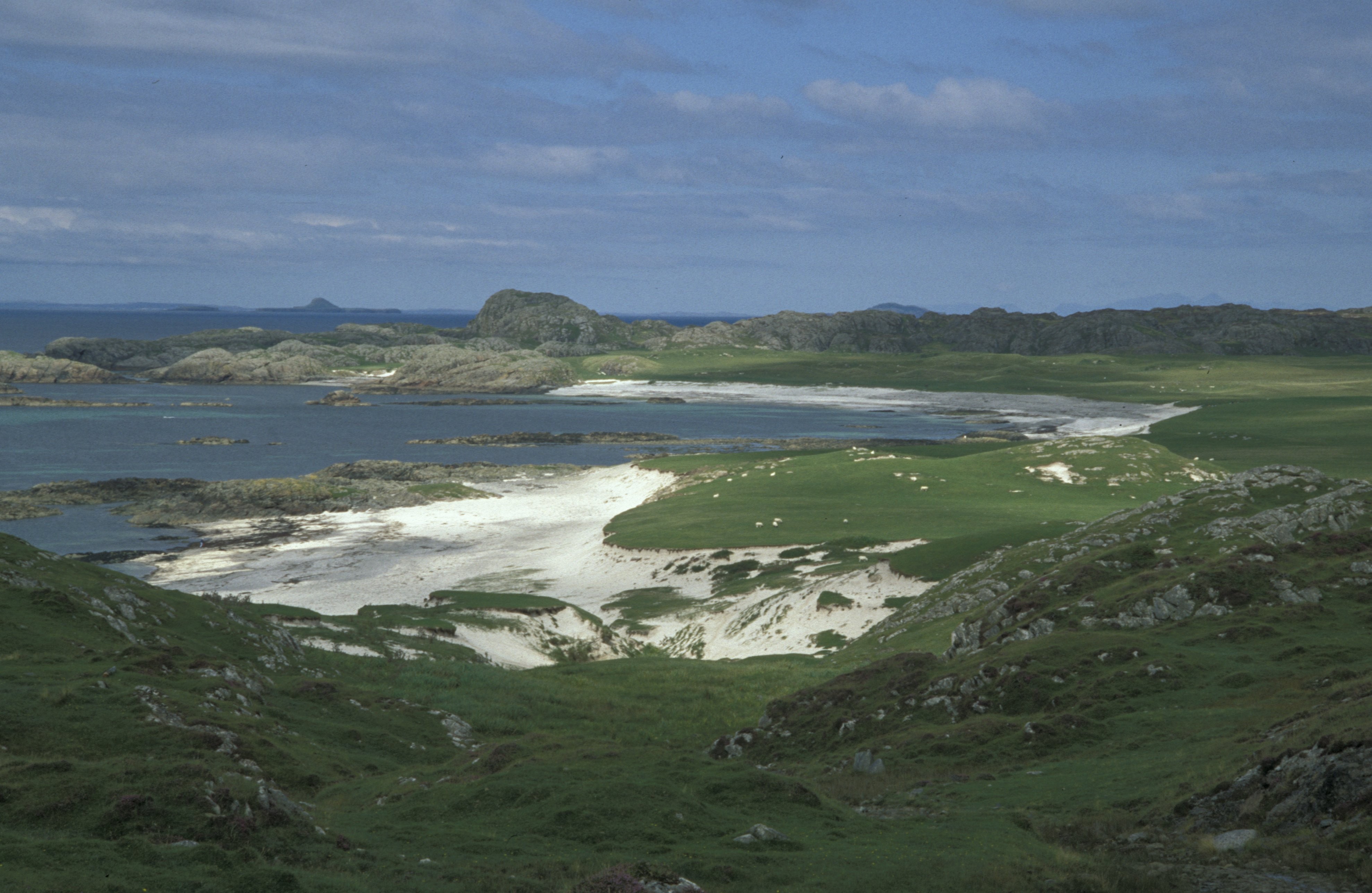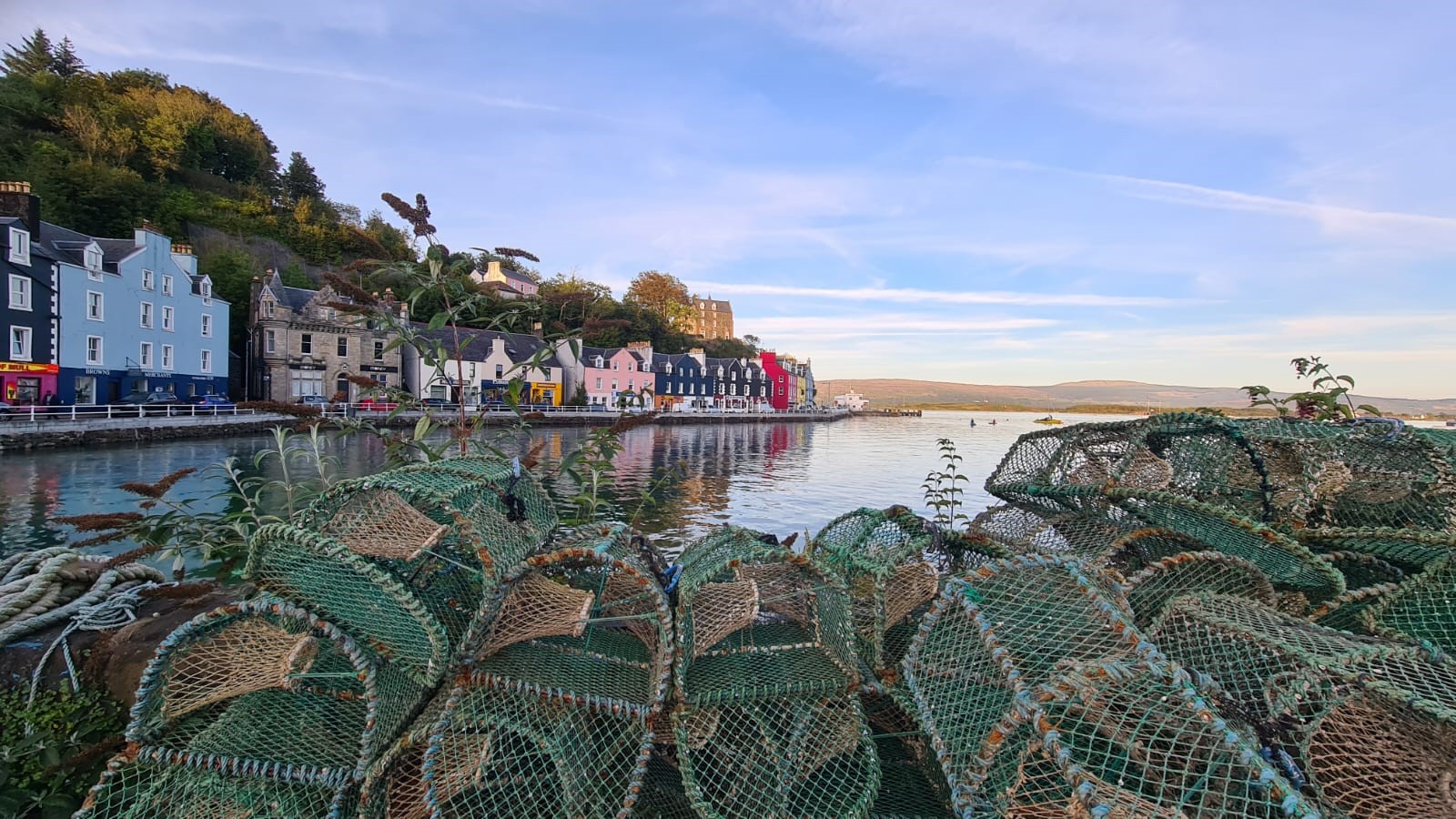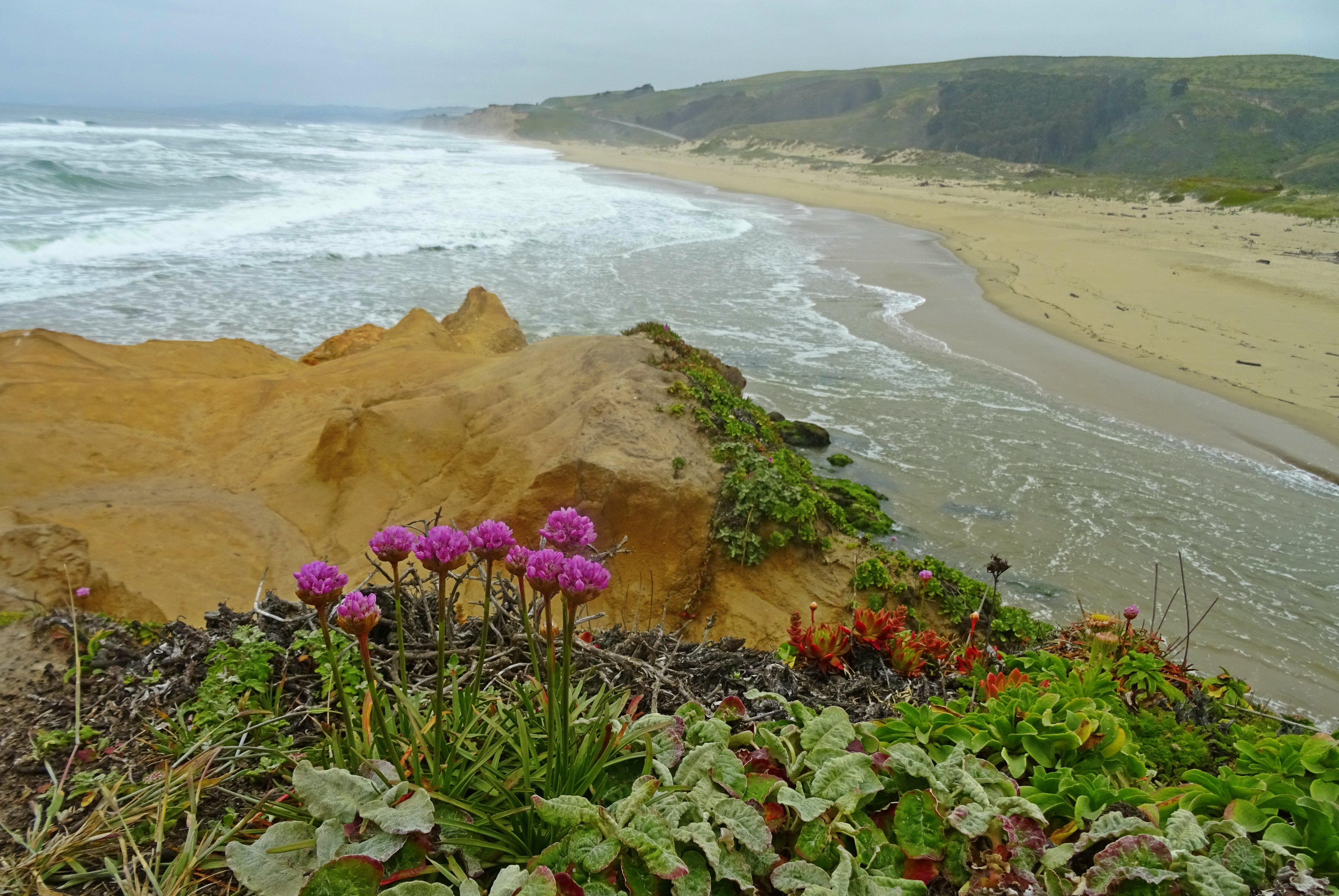|
Lunga, Treshnish Isles
The island of Lunga is the largest of the Treshnish Isles in Argyll and Bute, Scotland. The Isles are part of the Loch Na Keal#Nature and conservation, Loch Na Keal National Scenic Area. History Lunga, which is of volcanic origin, has been described as 'a green jewel in a peacock sea'. It was inhabited until the 19th century, and still bears the remains of blackhouses. The remains of the ruined village, abandoned in 1857, lie in the northeastern part of the island. Wildlife As one of the Treshnish Isles, Lunga is a designated Site of Special Scientific Interest, Special Protection Area and Special Area of Conservation. These designations reflect the importance of the island for its marine life, including the grey seals that inhabit the waters around it, and for its breeding colonies of seabirds, including storm-petrels, black-legged kittiwake, kittiwakes, Manx shearwaters, guillemot, puffin, European shag and razorbills. (The birds also breed on the Harp Rock, a sea stack s ... [...More Info...] [...Related Items...] OR: [Wikipedia] [Google] [Baidu] |
Treshnish Isles
The Treshnish Isles are an archipelago of small islands and skerries, lying west of the Isle of Mull, in Scotland. They are part of the Inner Hebrides. Trips to the Treshnish Isles operate from Ulva Ferry, Tobermory, Ardnamurchan and Tiree. Geography The archipelago extends over a distance of roughly , from the island of in the south (towards ) to the north-east. The largest island in the group, Lunga, is west of Gometra, south-west of (on the Isle of Mull), south-east of Coll, and north-west of Staffa.Ordnance Survey Landranger Map (1:50 000) "Iona & West Mull". Sheet 48 Other relatively large islands in the group are , Fladda and . There are numerous small skerries, particularly north of Lunga. All the islands are of volcanic origin. History There are several possible duns on the islands of Iron Age origin. Little is known of the early history, although these prominent landmarks would have been significant waypoints for the Norse settlers during their conquest in ... [...More Info...] [...Related Items...] OR: [Wikipedia] [Google] [Baidu] |
Barnacle Goose
The barnacle goose (''Branta leucopsis'') is a species of goose that belongs to the genus ''Branta'' of black geese, which contains species with extensive black in the plumage, distinguishing them from the grey ''Anser (genus), Anser'' species. Despite its superficial similarity to the brant goose, genetic analysis has shown its closest relative is the cackling goose. Taxonomy and naming The barnacle goose was first Biological classification, classified taxonomically by Johann Matthäus Bechstein in 1803. ''Branta'' is a Latinised form of Old Norse ''Brandgás'', "burnt [black] goose" and the specific epithet is from the Ancient Greek ''leukos'' "white", and ''opsis'' "faced". In the mediaeval period, the barnacle goose and the similar brant goose were not distinguished, and Barnacle goose myth, were formerly believed to spawn from the goose barnacle. This gave rise to the English name of the barnacle goose and the scientific name of the brant goose. The barnacle myth can be date ... [...More Info...] [...Related Items...] OR: [Wikipedia] [Google] [Baidu] |
Ardnamurchan
Ardnamurchan (, ) is a peninsula in the ward management area of Lochaber, Highland, Scotland, noted for being very unspoiled and undisturbed. Its remoteness is accentuated by the main access route being a single track road for much of its length. The most westerly point of mainland Great Britain, Corrachadh Mòr, is in Ardnamurchan. From 1930 to 1975 Ardnamurchan also gave its name to a landward district of Argyll, which covered a much wider area, including the districts of Morvern, Sunart and Ardgour. Geography Strictly speaking, Ardnamurchan covers only the peninsula beyond the villages of Salen (in the south) and Acharacle (in the north), but nowadays the term is also used more generally to include the neighbouring districts of Sunart, Ardgour, Morvern, and even Moidart (which was part of the former county of Inverness-shire, not Argyll). Ardnamurchan Point, which has the Ardnamurchan Lighthouse built on it, is commonly described as the most westerly point ... [...More Info...] [...Related Items...] OR: [Wikipedia] [Google] [Baidu] |
Iona
Iona (; , sometimes simply ''Ì'') is an island in the Inner Hebrides, off the Ross of Mull on the western coast of Scotland. It is mainly known for Iona Abbey, though there are other buildings on the island. Iona Abbey was a centre of Gaelic monasticism for three centuries and is today known for its relative tranquility and natural environment. It is a tourist destination and a place for spiritual retreats. Its modern Scottish Gaelic name means "Iona of (Saint) Columba" (formerly anglicised as "Icolmkill"). In 2019, Iona's estimated population was 120. In March 1980, the Hugh Fraser Foundation donated much of the main island (and its off-lying islands) to the current owner, the National Trust for Scotland. The abbey and some church buildings are owned by the Iona Cathedral Trust. One publication, describing the religious significance of the island, says that the island is "known as the birthplace of Celtic Christianity in Scotland,” and notes that “St Columba came here ... [...More Info...] [...Related Items...] OR: [Wikipedia] [Google] [Baidu] |
Tobermory, Mull
Tobermory (; ) is the capital of, and until 1973 the only burgh on, the Isle of Mull in the Scottish Inner Hebrides. It is located on the east coast of Mishnish, the most northerly part of the island, near the northern entrance of the Sound of Mull. The town was founded as a fishing port in 1788; its layout was based on the designs of Dumfriesshire engineer Thomas Telford. As of 2022 its population was 1,045. It is notable as the location for the 2002–05 children's programme ''Balamory'' by the BBC. Etymology The name ''Tobermory'' is derived from the Scottish Gaelic, Gaelic ', meaning "Mary's well". The name refers to a well located nearby which was dedicated in ancient times to the Mary, mother of Jesus, Virgin Mary. Prehistory and archaeology Archaeological excavations have taken place at Baliscate just outside of the town. The site was first noted by Hylda Marsh and Beverley Langhorn as part of the Scotland's Rural Past. In 2009, it was partially excavated by ''Time T ... [...More Info...] [...Related Items...] OR: [Wikipedia] [Google] [Baidu] |
Tiree
Tiree (; , ) is the most westerly island in the Inner Hebrides of Scotland. The low-lying island, southwest of Coll, has an area of and a population of around 650. The land is highly fertile, and crofting, alongside tourism, and fishing are the main sources of employment for the islanders. Tiree, along with Colonsay, enjoys a relatively high number of total hours of sunshine during the late spring and early summer compared to the average for the United Kingdom. Tiree is a popular windsurfing venue; it is sometimes referred to as the "Hawaii of the north". In most years, the Tiree World Classic surfing event is held here. People native to the island are known as Tirisdich. History Tiree is known for the 1st-century-AD broch, for the prehistoric carved Ringing Stone and for the birds of the headland. , abbot of Iona Abbey 679–704, recorded several stories relating to St Columba and the island of Tiree. In one story, Columba warned a monk called Berach not to sai ... [...More Info...] [...Related Items...] OR: [Wikipedia] [Google] [Baidu] |
Mertensia Maritima
''Mertensia maritima'' is a species of flowering plant in the borage family, and is known by the common names oyster leaf in North America, oyster plant in the British Isles, and sea bluebells. It is restricted to gravelly sea shores, usually within reach of the highest winter tides in the Northern Hemisphere, reaching north to the northern parts of Canada, Greenland and Svalbard. It is a perennial herb producing a stem approaching 50 centimeters in maximum length. The inflorescence forms a cluster of flowers which are first reddish, and later bright blue. Description ''Mertensia maritima'' is known as the oyster leaf or oyster plant because it gives off a faint smell of mushrooms and when eaten it tastes vaguely of oysters. The chemical that gives this plant the oyster-like odour when its leaves are crushed is dimethyl sulphide, a compound that is noted for being a major part of the odour profile of raw oysters. . It is native to Britain and Northern Europe; however, population ... [...More Info...] [...Related Items...] OR: [Wikipedia] [Google] [Baidu] |
Tormentil
''Potentilla'' is a genus containing over 500 species of annual, biennial and perennial herbaceous flowering plants in the rose family, Rosaceae. Potentillas may also be called cinquefoils in English, but they have also been called five fingers and silverweeds. Some species are called tormentils, though this is often used specifically for common tormentil (''P. erecta''). Others are referred to as barren strawberries, which may also refer to '' P. sterilis'' in particular, or to the closely related ''Waldsteinia fragarioides''. Several other cinquefoils formerly included here are now separated in distinct genera – notably the popular garden shrub ''P. fruticosa'', now ''Dasiphora fruticosa''. Potentillas are generally found throughout the northern continents of the world (holarctic), though some occur in montane biomes of the New Guinea Highlands. Description Typical cinquefoils look most similar to strawberries, but differ in usually having dry, inedible fruit (hence the ... [...More Info...] [...Related Items...] OR: [Wikipedia] [Google] [Baidu] |
Iris Pseudacorus
''Iris pseudacorus'', the yellow flag, yellow iris, or water flag, is a species of flowering plant in the family Iridaceae. It is native to Europe, western Asia and northwest Africa. Its specific epithet ''pseudacorus'' means "false acorus", referring to the similarity of its leaves to those of '' Acorus calamus'' (sweet flag), as they have a prominently veined mid-rib and sword-like shape. However, the two plants are not closely related. Description This herbaceous flowering perennial plant grows to , or a rare tall, with erect leaves up to long and broad. The flowers are bright yellow, across, with the typical iris form. The fruit is a dry capsule long, containing numerous pale brown seeds. ''I. pseudacorus'' grows best in very wet conditions, and is common in wetlands, where it tolerates submersion, low pH, and anoxic soils. The plant spreads quickly, by both rhizome and water-dispersed seed. It fills a similar niche to that of ''Typha'' and often grows with it, t ... [...More Info...] [...Related Items...] OR: [Wikipedia] [Google] [Baidu] |
Armeria Maritima
''Armeria maritima'', the thrift, sea thrift or sea pink, is a species of flowering plant in the family Plumbaginaceae. It is a compact evergreen perennial which grows in low clumps and sends up long stems that support globes of bright pink flowers. In some cases purple, white or red flowers also occur. It is a popular garden flower and has been distributed worldwide as a garden and cut flower. It does well in gardens designed as xeriscapes or rock gardens. The Latin specific epithet ''maritima'' means pertaining to the sea or coastal. Subspecies 12 subspecies are accepted. * ''Armeria maritima'' subsp. ''azorica'' – Azores *''Armeria maritima'' subsp. ''barcensis'' – central Romania (near Brasov) *''Armeria maritima'' subsp. ''bottendorfensis'' – central Germany (Bottendorfer Hügel) * ''Armeria maritima'' subsp. ''californica'' – California Seapink – west coast of North America from Vancouver Island to California *''Armeria maritima'' subsp. ''elongata'' – Ta ... [...More Info...] [...Related Items...] OR: [Wikipedia] [Google] [Baidu] |
Silene Maritima
''Silene uniflora'' is a species of flowering plant in the carnation family known by the common name sea campion. Description ''Silene uniflora'' is a perennial plant that forms a mat with stems growing outwards to as much as 30 cm. The stems can grow along the ground or grow upwards towards their ends. The leaves are linear, grey-green glabrous and glaucous in opposite and decussate pairs, the flowers white with five deeply notched petals, the 5 sepals fused and inflated to form a bladder. It is similar in appearance to the bladder campion (''Silene vulgaris'') but with flowers generally solitary. Taxonomy In 1762 Carl Linnaeus named ''Silene amoena'', a species that does not have the same description as ''Silene uniflora'', but is regarded as a synonym of ''Silene uniflora'' subsp. ''uniflora''. The scientific description and naming of the species as a whole was by Albrecht Wilhelm Roth in 1794. It is classified in the genus ''Silene'' which is in the family Caryophyl ... [...More Info...] [...Related Items...] OR: [Wikipedia] [Google] [Baidu] |





